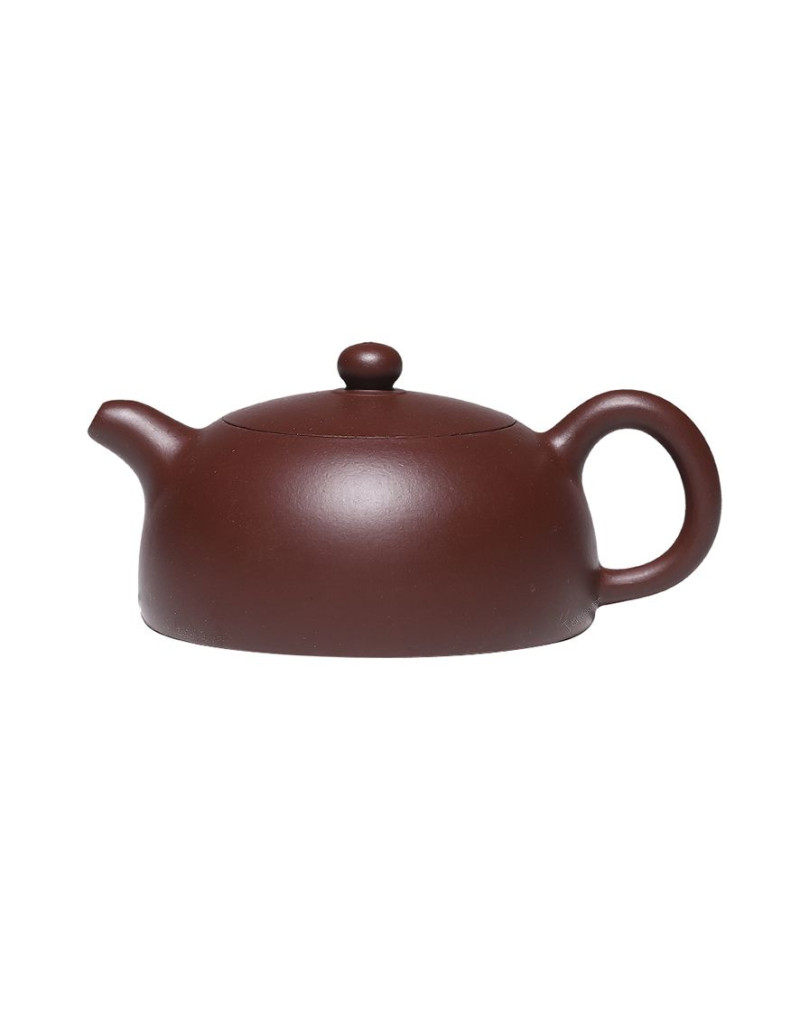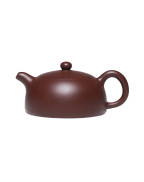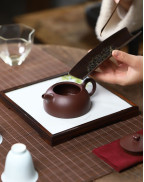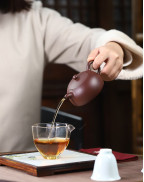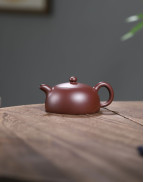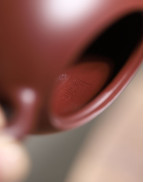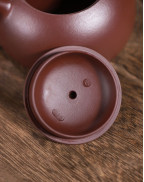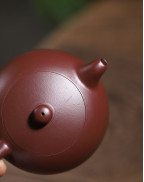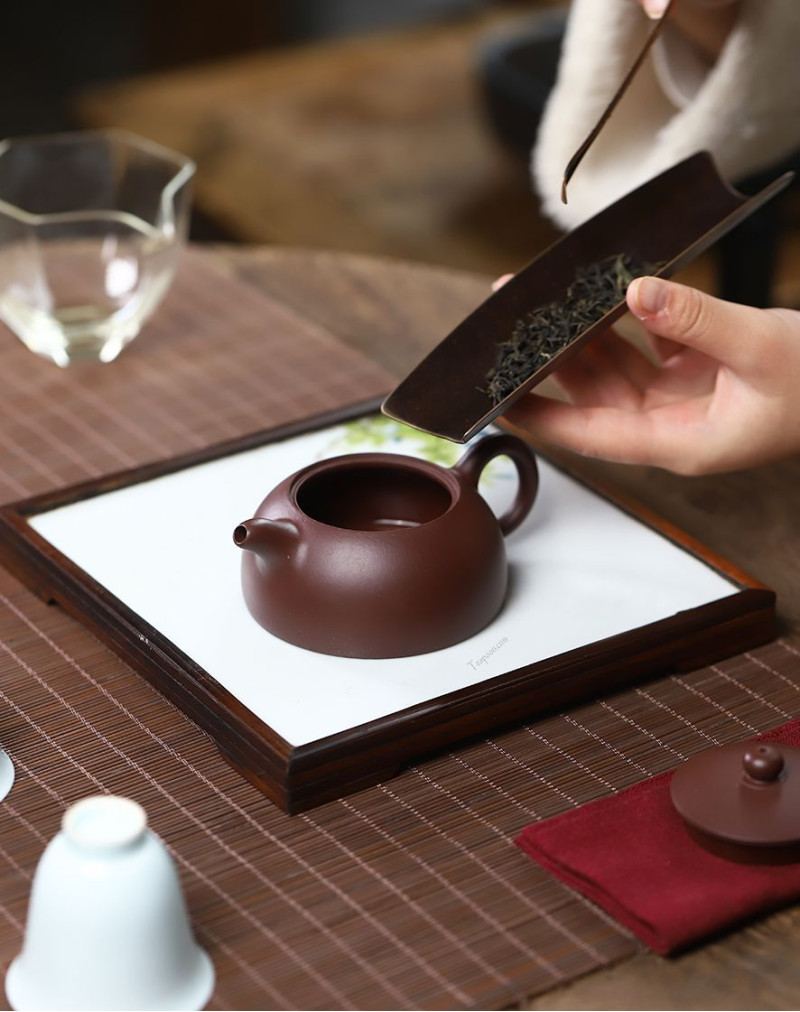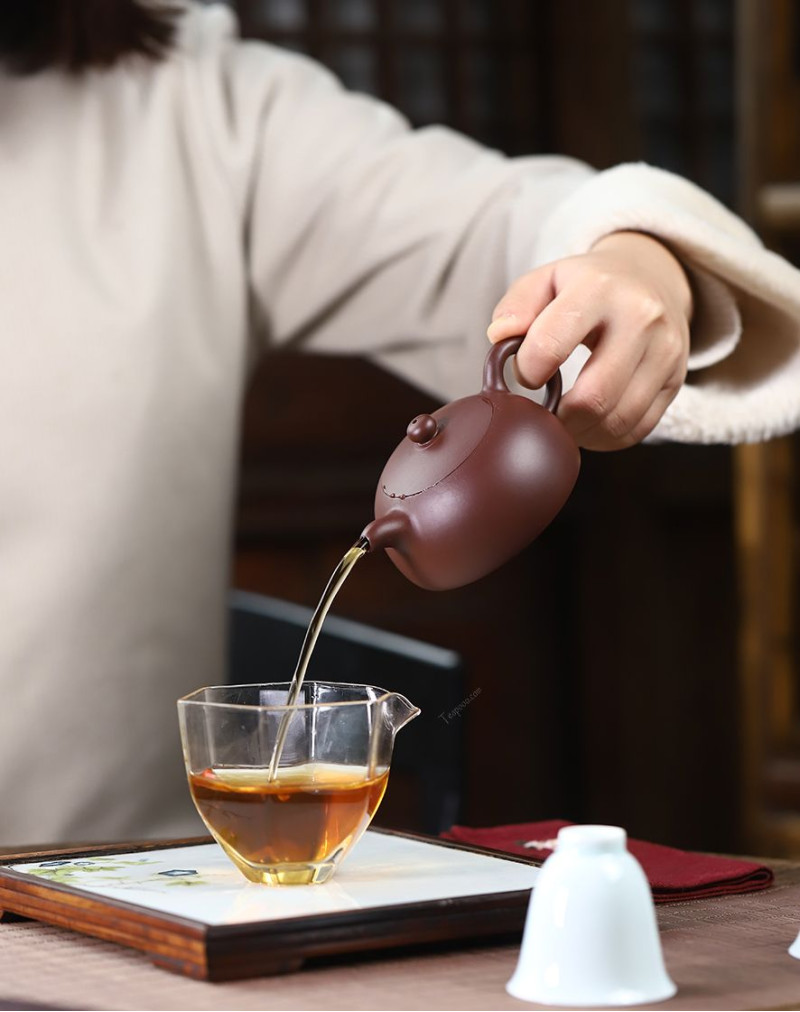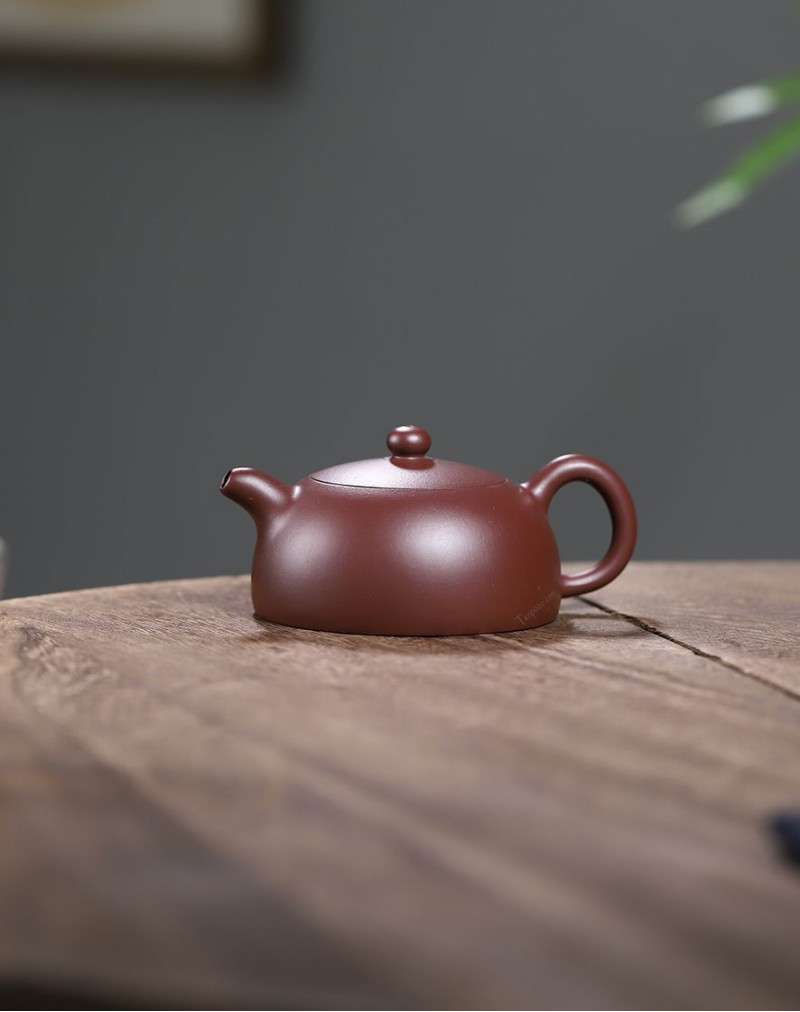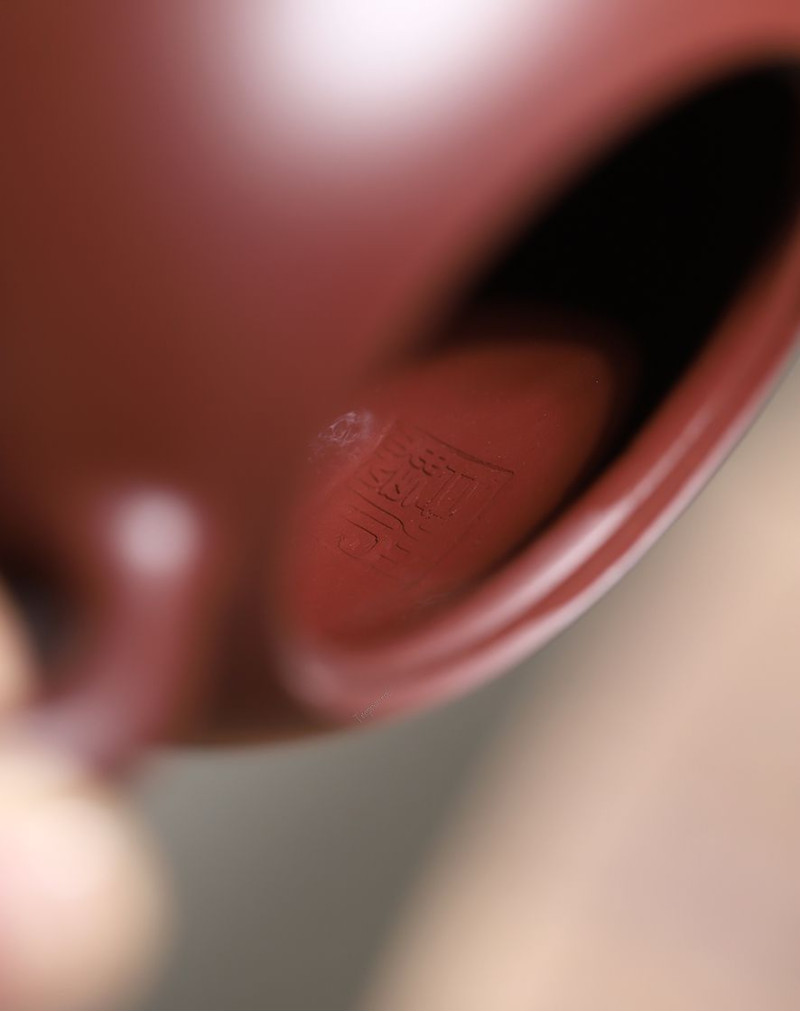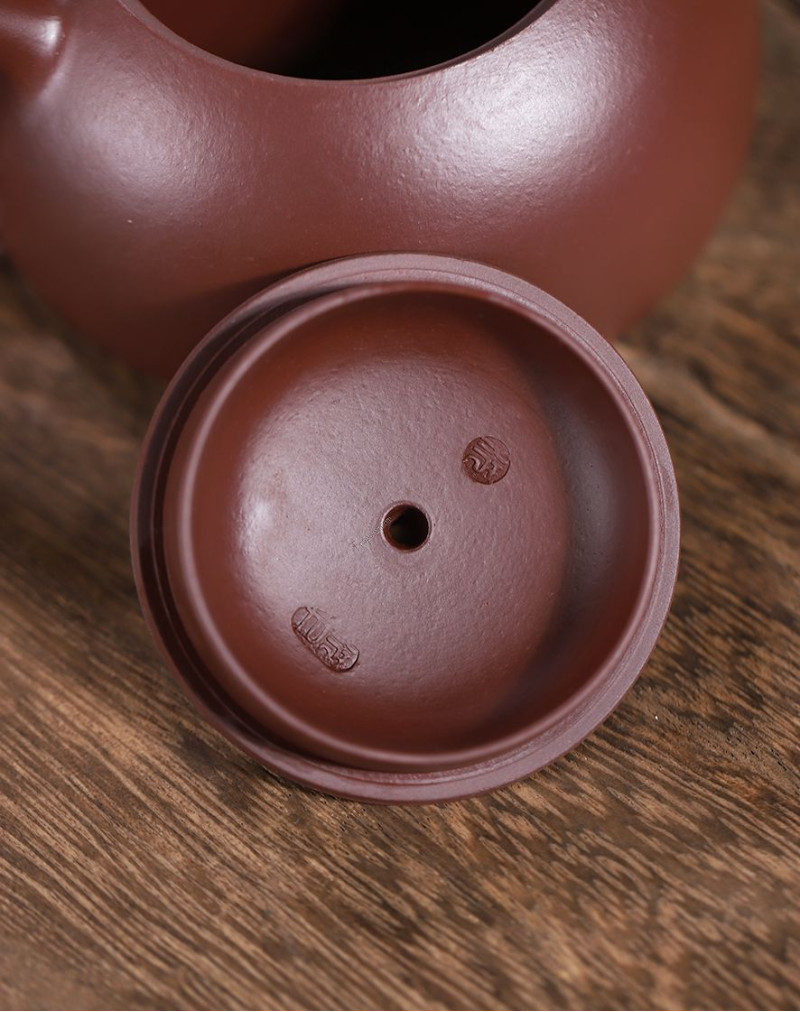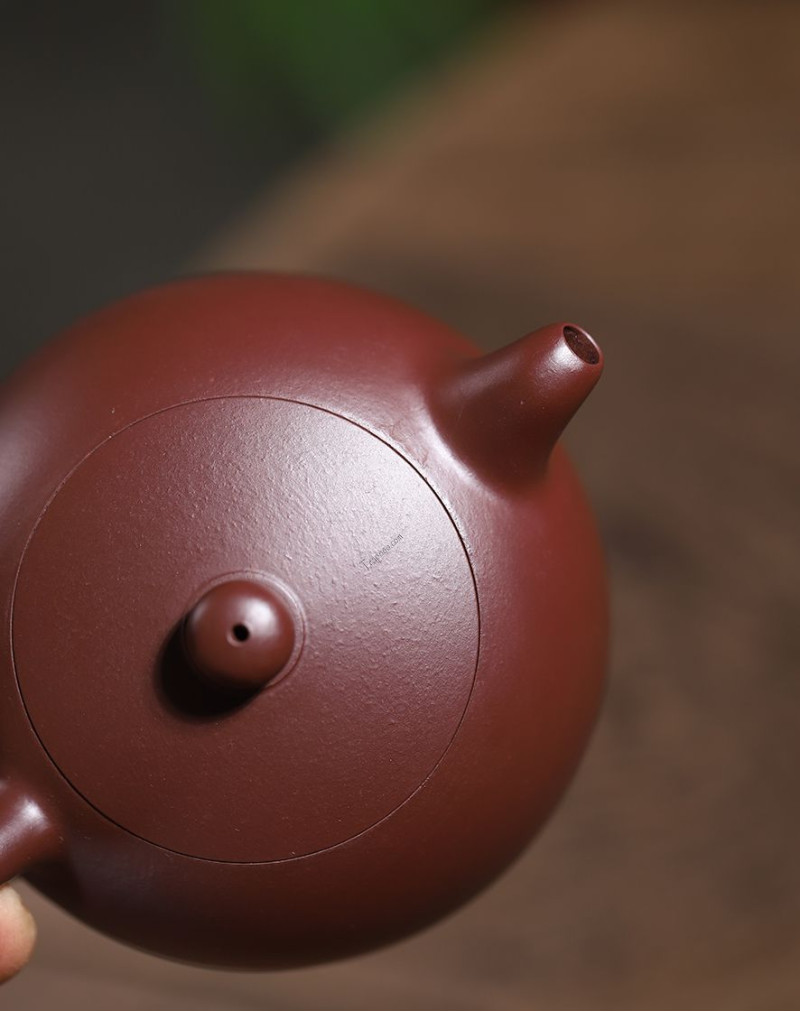Classic Half-Moon-Shaped Purple Clay Tea Pot
- Product Code: Single
- Availability: Out Of Stock
Basic Info
Name: Classic Half-Moon-Shaped Purple Clay Tea Pot
Category: Teapot
Origin: Dingshu Town,Yixing City, Jiangsu Province
Material: Da hong pao red clay
Date: Spring 2022
Height: 5.5cm
Width: 12.5cm
Diameter of opening: 5.1 cm
Capacity: 140+/-10 cc (ml)
Kiln Temperature: > about 1100°C
Craftsman: Shi li Jiang Ren
Classic Half-Moon-Shaped Purple Clay Tea Pot
Using purple clay as raw material, the shape of this pot is inspired by half-moon. Half-Moon-Shaped tea pot has a large inlet , which is easy to pour out tea dregs and clean. In addition, this teapot has good heat preservation performance and is suitable for fermented tea such as Oolong tea and Pu'er tea.
The small hand-made teapot is in a round shape, with a short water spout. The overall style is classic, elegant and looks attractive and lovely. It has a fine gloss and delicate warm hue on it’s body by the perfect temperature in the kiln.The inner wall of this pot is stamped with the author's name.
It is suitable for brewing black tea, Pu-erh tea, old white tea, oolong tea, Wuyi rock tea, etc.
The color and tone of the actual goods you received may be different from the photos on our website due to the influence of the light when taking photos and display equipment. Thank you for your understanding.
About Yixing purple clay
Yixing, Jiangsu Province, known as "Yangxian" in ancient times, is located on the west bank of Taihu Lake. It is famous for its Zini (purple clay). Zini can be broadly categorised into three main type: purple sand/clay, green clay (Benshan green mud) and Beige(Duanni), which are collectively called purple clay. They are composed of natural minerals and are contained in the interlayer between rock and ordinary clay, so they are called "mud in rock". The purple clay is a special clay with high iron content, and its color is mainly reddish brown. It is an ideal clay for making unglazed pottery with hard texture and good air permeability.
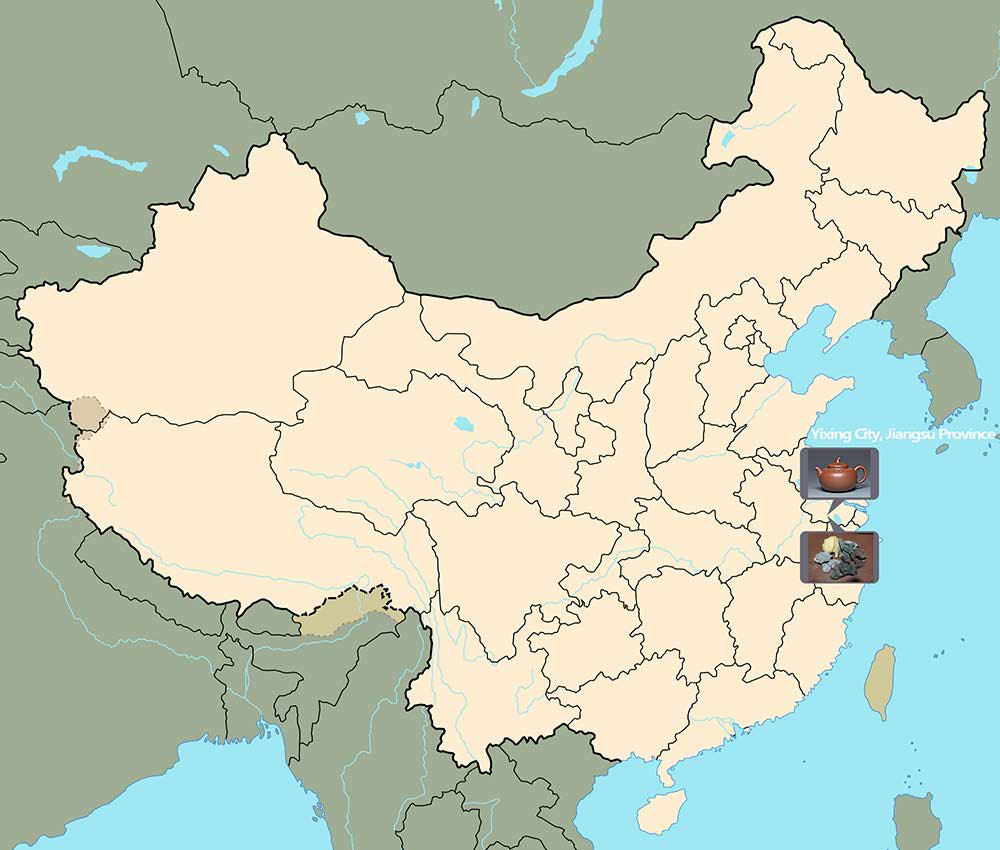
Show Full Description
It is said that the earliest mineral materials for making Yixing purple clay pottery were excavated in Huanglong Mountain under the guidance of a monk. Because these mineral materials have five colors and are bright, they are also called "five-colored soil". Although this is a legend, but Yixing purple clay have a variety of colors is a fact. The purple clay has a variety of natural colors, such as purplish brown, azure, bright red, yellow, purplish red, reddish brown, light green, dark green, and bluish gray. According to statistics, the reserves of clay in Yixing area account for more than 95% of the total reserves in Jiangxi Province, and it is the most important clay mineral deposit in Jiangsu. Huanglongshan (Yellow Dragon Mountain) area is the most important producing area of purple clay. It is no exaggeration to say that most of the raw materials used to make Yixing teapot are produced in this small hill.
Yixing is located at the edge of Jiangnan ancient land, where purple clay is spread all over the hills and mountains in the south, formed about 200 million to 400 million years ago. Under the combined external force of wind and water waves, the weathered original rock and ore particles piled up layer by layer, and finally formed quartz, mullite, mica, feldspar, etc. through long-term geological changes. Terracotta minerals are generally layered. At that time, the climate was dry and hot, and the iron was easy to be oxidized, so there was more hematite in the purple sand ore.
The content of ferric oxide in purple clay is about 8~12%, which is an important coloring element in purple clay. Purple and red come from this element. The alumina contained in it determines the temperature required for making pottery.
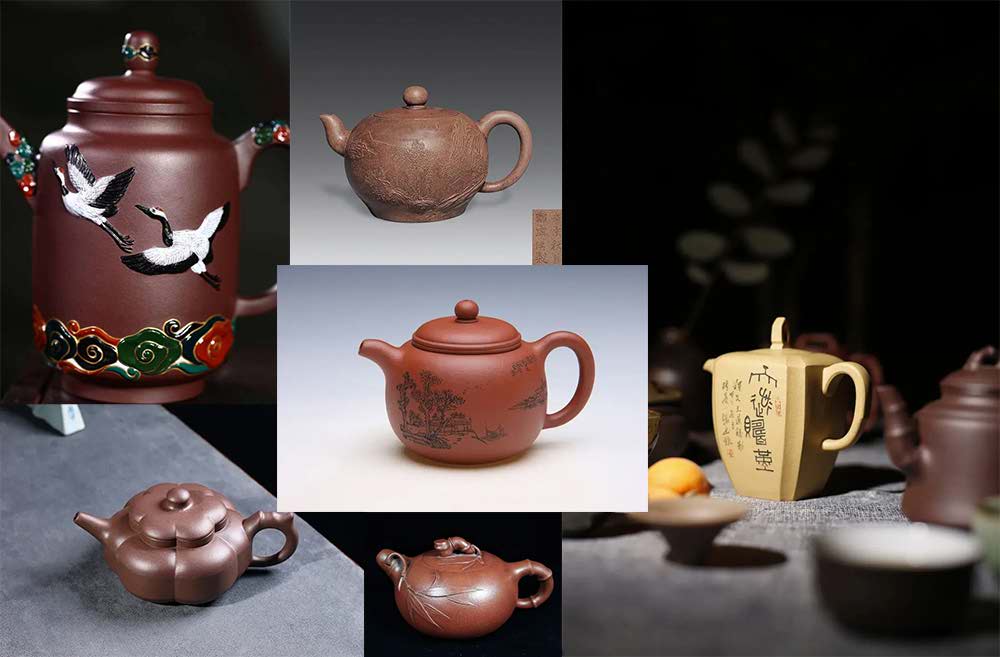
The minerals in the purple clay is in the form of large and small discs, angular plates, needles and clusters. Under the high temperature of more than 1000 ℃, large, medium and small particles react and fuse with each other to form a special cluster structure, which is breathable, impermeable, heat-resistant and has a double porosity structure.
Up to now, purple caly ore is only produced in hills of Huanglong (yellow dragon) Mountain and and hilly areas in Dingshu Town. Huanglong Mountain is located in the northwest of Dingshu Town, Yixing, with an area of about 2.5 square kilometers.
Due to the long-term mining and the implementation of some modern municipal projects, Huanglong Mountain is not what it used to be, and only part of the mountain remains.
The purple clay ore does not exist in isolation, but in a state of combination of multiple clay layers. The thickness of the clay layer is generally about tens of centimeters to one meter, and some are only a few centimeters thick. Even in some ore beds, there will be a particularly hard yellow stone wall, which makes the extraction process very difficult to carry out.
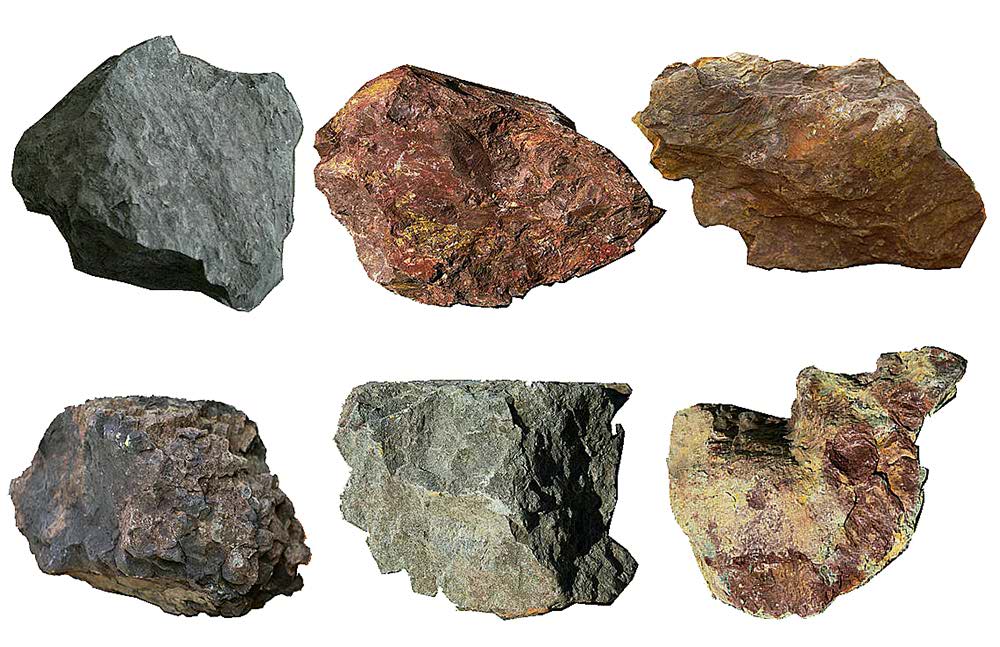
During the Ming and Qing Dynasties, the exploitation of purple clay has become the main sideline of farmers in the Huanglong Mountain area. The common clay excavated in Huanglongshan mining area is used to make common pottery such as jars, jars and urns. The greasy-luster purple clay is always carefully stacked separately to make fine purple clay pottery. The main difference between purple clay and common clay is the content of aluminum oxide and other metal components in the clay. The purple clay has a high content. The content of metals such as aluminum oxide in the purple clay of Huanglong Mountain is the highest.
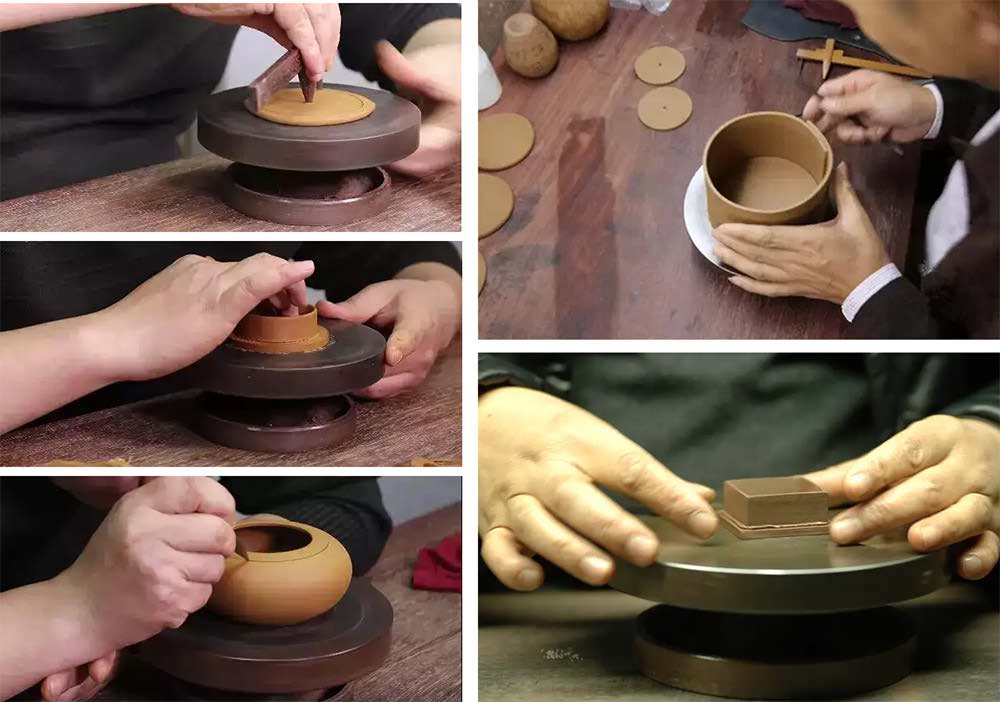
In the early days, the main tools used to mine purple clay were hammers, wedges, pickaxes, etc. Without the help of modern equipment, the mining was done in shallow surface or in single small Wells. The early mining activities are controlled by individuals and small owners, and the mining sites are more randomly distributed. Although the total amount of purple clay is limited, the types are relatively diverse. Because the content of purple clay in the mineral layer is less, the clay has been relatively "precious", so purple clay is also known as "rich soil".
Purple clay is also called "five-color soil". It has many colors, such as purple, black, green, yellow, azure, reddish brown, etc. In general, purple clay can be categorisedinto three basic types: purple, red,green.
Purple: Zisha or zi ni (紫砂/紫泥 literally, "purple sand/clay"): Named according to the basic color of ore rock, the color of finished pottery includes light purple, purple red, purple and other colors.
Beige: Duan ni (段泥 or 團泥): In Yixing dialect, "團(tuan)" and "duan(段)" are homonyms, so they are actually a kind of mud. It may be because of the co-occurrence of ore, so it is more appropriate to be named as團(tuan) clay. For example, purple clay grows together with green clay , green clay grows together with red clay , and purple clay grows together with red clay, so this mud is relatively more complex than others.
Red: Zhu sha or zhu ni (朱砂/泥; literally, "cinnabar sand/clay"): It is the clay composed of small red clay (yellow muddy lump) and large red clay(sandy hard lump). In the past, there was no Zhu ni(cinnabar ), which was mixed with red clay for refining. Later, it gradually separated from red clay and became a separate category. More specifically, Zhu ni(cinnabar ) is a finer red clay, which has a higher iron content than red clay, about 18%.
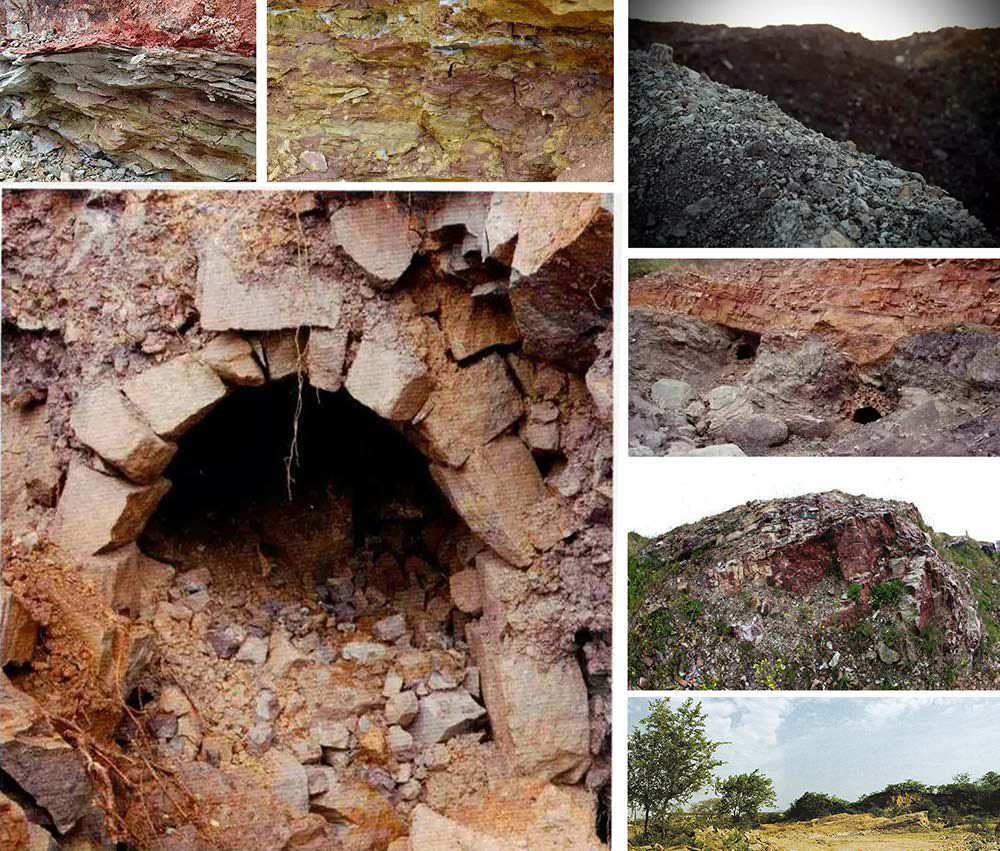
Differences between purple clay pottery and ordinary pottery:
Purple clay pottery is a branch of pottery. Purple clay pottery refers to unglazed pottery made of special clay with high iron content, mainly reddish brown in color, hard in texture and good in air permeability. According to the definition of national standards, the difference between purple clay and other pottery is:
1: Made of clay with high iron content.
2: No glazing.
3: Good air permeability.
Purple clay can be used to make all kinds of household utensils, the most famous of which is teaware.Purple clay teaware has a somewhat sandy texture and high resistance to shrinkage during the firing process. Thanks to its high adhesion properties, it is hand-molded into various shapes under the infinite imagination of craftsmen. The total amount of purple clay ore is limited, but the demand for purple clay sets is constantly increasing. Influenced by this contradiction, good purple clay pottery is very valuable, especially high-quality purple clay tea sets, they are not only practical objects, but also works of art.
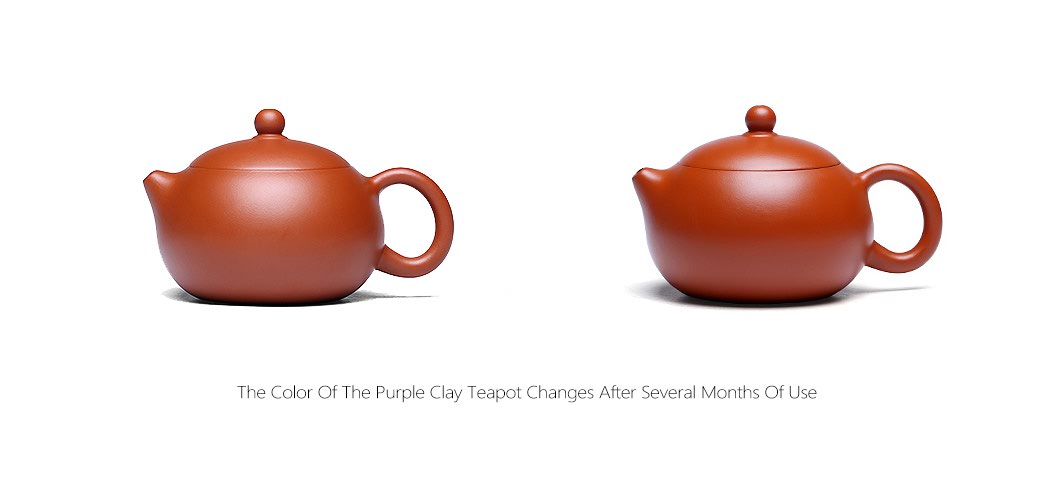
How to maintain the purple clay pot
1. Avoid placing it in dusty places. Avoid putting it in the place with too much oil smoke and dust, so as not to affect the moisturizing feeling of the pot surface.
2. Do not soak the tea in the teapot for a long time. After each brewing, be sure to pour out the tea residue and tea soup, rinse the inside and outside of the pot with hot water, and then pour out the water to keep the pot dry.
3. Open the lid of the kettle and place it in a ventilated and dry place. When there is no water drop inside or outside, put the lid on and store it properly.
4. The tea dregs should be poured out, and the tea left in the pot should be washed away with hot water to keep the inside and outside of the pot clean, otherwise it is easy to produce peculiar smell in the pot.
5. Do not use chemical detergent to clean the teapot, because it will damage the luster of the teapot surface.
About Maker:
Du Chengping was born in Yixing, Jiangsu in 1971. He learned to make purple clay pottery from his elders when he was young. He has more than 30 years of experience in purple clay pot making and is a member of the China Arts and Crafts Society. Now he has his own studio in Yixing. On the basis of absorbing the experience of predecessors, he has created some purple clay teapots with his own personal characteristics, which have been praised by many purple clay pottery lovers.


